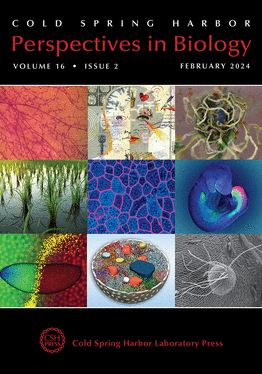Drivers of Morphogenesis: Curvature Sensor Self-Assembly at the Membrane
IF 6.9
2区 生物学
Q1 CELL BIOLOGY
引用次数: 0
Abstract
This review examines the relationships between membrane chemistry, curvature-sensing proteins, and cellular morphogenesis. Curvature-sensing proteins are often orders of magnitude smaller than the membrane curvatures they localize to. How are nanometer-scale proteins used to sense micrometer-scale membrane features? Here, we trace the journey of curvature-sensing proteins as they engage with lipid membranes through a combination of electrostatic and hydrophobic interactions. We discuss how curvature sensing hinges on membrane features like lipid charge, packing, and the directionality of membrane curvature. Once bound to the membrane, many curvature sensors undergo self-assembly (i.e., they oligomerize or form higher-order assemblies that are key for initiating and regulating cell shape transformations). Central to these discussions are the micrometer-scale curvature-sensing proteins’ septins. By discussing recent literature surrounding septin membrane association, assembly, and their many functions in morphogenesis with support from other well-studied curvature sensors, we aim to synthesize possible mechanisms underlining cell shape sensing.形态发生的驱动因素:膜曲率传感器的自组装
这篇综述探讨了膜化学、曲率感应蛋白和细胞形态发生之间的关系。曲率感应蛋白通常比它们定位的膜曲率小几个数量级。纳米级蛋白质是如何感知微米级膜特征的?在这里,我们将追溯曲率感应蛋白通过静电和疏水相互作用与脂膜接触的过程。我们将讨论曲率传感如何取决于膜的特征,如脂质电荷、堆积和膜曲率的方向性。一旦与膜结合,许多曲率传感器会进行自组装(即它们会寡聚或形成高阶组装,这是启动和调节细胞形状转变的关键)。这些讨论的核心是微米尺度的曲率感应蛋白隔膜。通过讨论最近有关隔膜的膜关联、组装及其在形态发生中的多种功能的文献,并从其他已被充分研究的曲率感应器中获得支持,我们旨在总结细胞形状感应的可能机制。
本文章由计算机程序翻译,如有差异,请以英文原文为准。
求助全文
约1分钟内获得全文
求助全文
来源期刊

Cold Spring Harbor perspectives in biology
CELL BIOLOGY-
CiteScore
15.00
自引率
1.40%
发文量
56
审稿时长
3-8 weeks
期刊介绍:
Cold Spring Harbor Perspectives in Biology offers a comprehensive platform in the molecular life sciences, featuring reviews that span molecular, cell, and developmental biology, genetics, neuroscience, immunology, cancer biology, and molecular pathology. This online publication provides in-depth insights into various topics, making it a valuable resource for those engaged in diverse aspects of biological research.
 求助内容:
求助内容: 应助结果提醒方式:
应助结果提醒方式:


